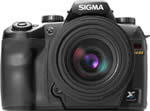Highlight:Exports of digital cameras from Mainland China in 2004 are estimated at 73 million units valued at $5.5 billion, up from 48.63 units worth $2.96 billion in 2003, a 190% increase. The 2003 total represented 86% of global production. With higher resolution and steady supply stabilizing prices, further explosive growth is seen for 2005.
Summary: * Mainland China dominates global output as Taiwan and Hong Kong roll out higher-resolution models.Steady supply stabilizes prices.
* About 200 makers are in mainland China's digital camera industry, with less than a third of them active and into mass production.
* About 90 percent are located in Guangdong province, shipping 56 percent of the country's exports.
* A healthy mix of domestic and foreign-invested makers have set up manufacturing bases in the mainland to capitalize on the country's support industries that serve as suppliers of digital camera parts and components, as well as of services such as mold-making, plastic injection, metal stamping and machining, and surface mounting of sensor modules.
* These include Hong Kong and Taiwan makers that mainly focus on the OEM/ODM business for overseas markets, although some of them plan to promote their own brand.
* Others, such as famous domestic IT brands Lenovo and Founder Tech, are subcontracting their manufacturing capabilities to mainland makers as they strengthen their in-house design and brands.
* Taipei-based Market Intelligence Center (MIC) translates this to total shipment value exceeding $500 million, rising 18.5 percent from Q1 2004, and more than 50 percent in terms of year-on-year change.
* Digital cameras adopting CCD image sensors remain the driving force in shipments volume, accounting for 70 percent of exports in Q2 2004.
* Guangzhou Darling Industrial Inc.'s first camera models with MPEG-4 video decoder and MP3 playback support would have been put into production by end-2004.
* In Hong Kong, Sunox Technology Ltd plans to release 4MP models in 2005, using interpolation technology.
* Models with MP3, radio, voice recording and binocular/telescope features have already been released and more are expected to come out in early 2005.
* In Taiwan, BenQ Corp.'s digital sports cameras have video and voice recorders, FM radio tuners and MP3 player functions.
http://www.newstarget.com/003252.html
 CNET have reviewed the new Sigma SD14 DSLR camera. “Under the right circumstances, the Sigma SD14 can create very nice images, but once you move up to higher ISOs, the image quality degrades significantly. At ISO 100 or ISO 200, colors look quite accurate and the camera’s white balance is generally neutral. If anything, colors looked slightly oversaturated in our test images, especially reds and oranges. As you increase the ISO, however, not only do you see a increase in noise, but the entire color profile of the camera
CNET have reviewed the new Sigma SD14 DSLR camera. “Under the right circumstances, the Sigma SD14 can create very nice images, but once you move up to higher ISOs, the image quality degrades significantly. At ISO 100 or ISO 200, colors look quite accurate and the camera’s white balance is generally neutral. If anything, colors looked slightly oversaturated in our test images, especially reds and oranges. As you increase the ISO, however, not only do you see a increase in noise, but the entire color profile of the camera


